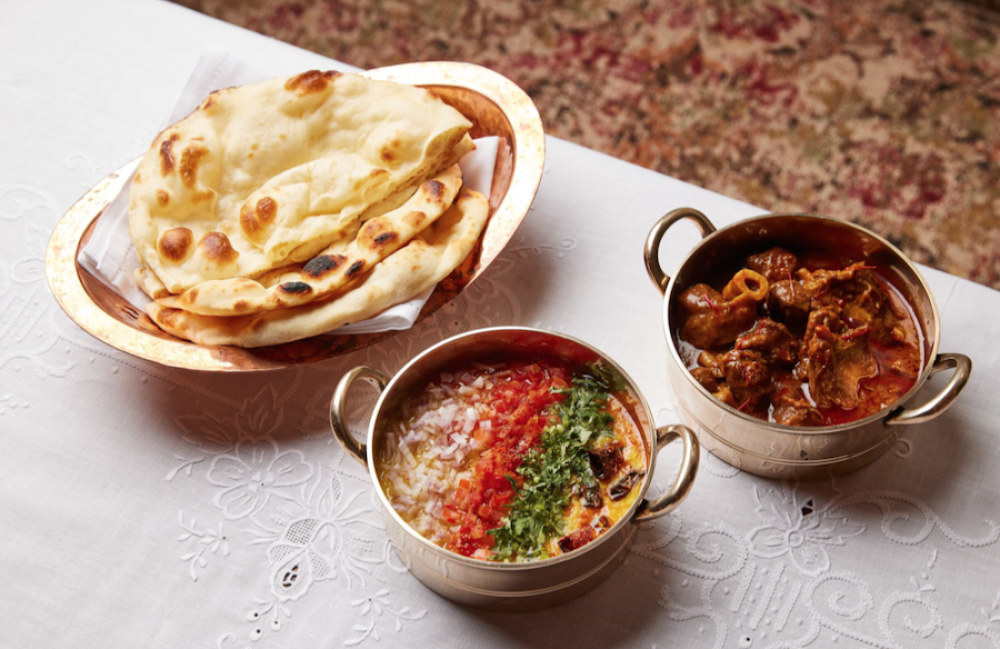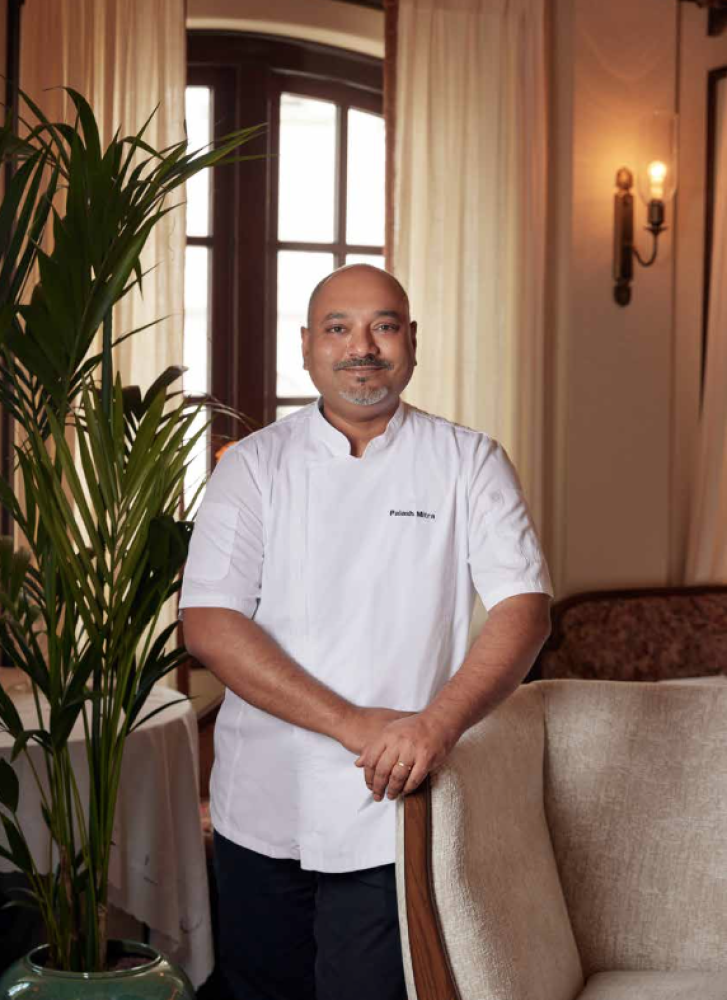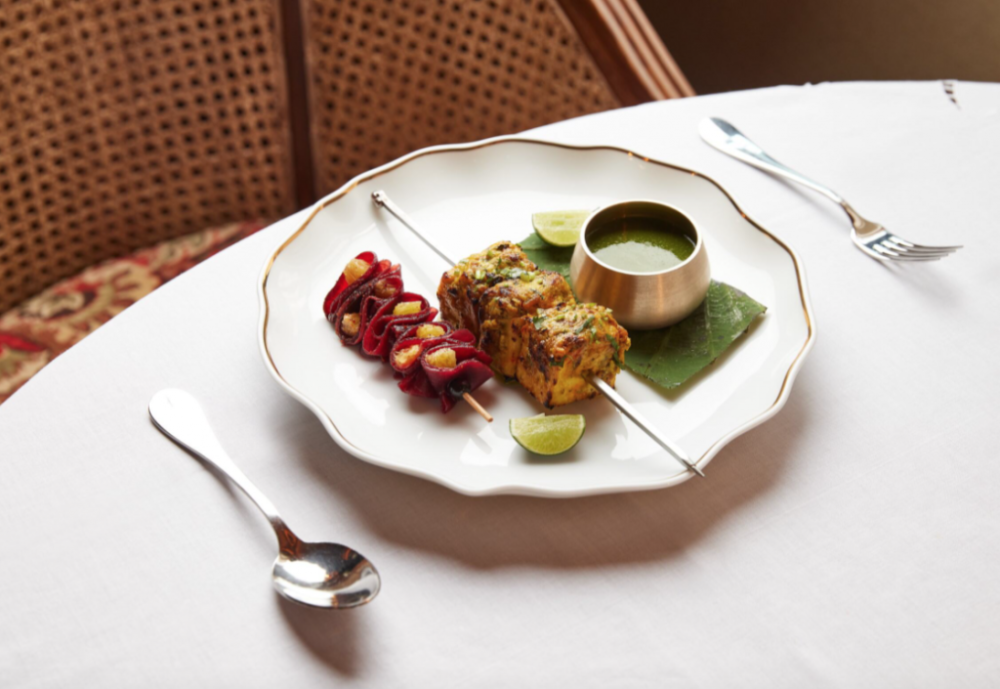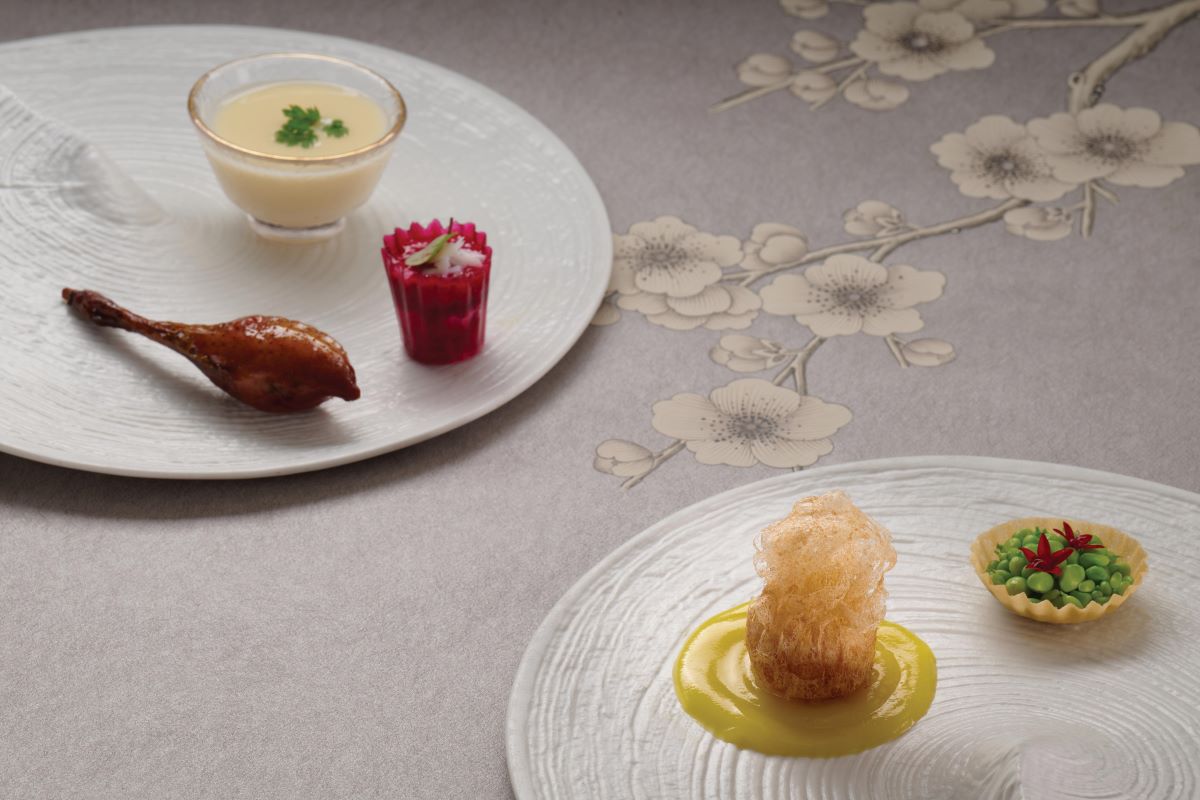Led by Palash Mitra, Prince and the Peacock is a culinary ode to the history, grandeur and traditions of the royal houses of India’s princely states. The West Bengal-born chef talks to Stephenie Gee about the inspired concept, bringing it to life, and touching hearts and taste buds

Long before India’s independence from Britain, there were regions where neither the British nor the nationalists were primarily positioned. These were the approximately 600 semi- autonomous kingdoms, or princely states, which spanned the breadth and length of the subcontinent. In this opulent era, rulers reigned not merely as authorities looking to amass new territories and consolidate power, but also as devoted patrons of the arts.
Among the lasting contributions to art and culture these princely states passed down through generations, it is their enduring culinary legacies that stand as testament to their grandeur. For the royal courts, might was measured not only in armaments or gold, but in the bountiful spread of their banquets. Each region contributed its own unique flavours and techniques, shaped by factors such as geography, climate and cultural influences. The coastal states of Bengal, for instance, highlighted their abundance of seafood and spices, while the desert kingdoms of Rajasthan excelled in hearty and aromatic dishes designed to withstand the arid climate.

Marking phase two of Black Sheep Restaurants’ grand revival of Tai Kwun’s Central Magistracy, Prince and the Peacock is bringing the age-old royal cuisine of various erstwhile princely states to the city’s heart in a tribute to the contributions of this era. Leading the kitchen is Palash Mitra, the group’s culinary director of South Asian cuisines, who to grant history its due respect embarked on a hospitality pilgrimage to India, travelling 15,000 kilometres across Delhi, Jaipur, Udaipur, Hyderabad, Chennai, Lucknow and more to see, feel, taste and experience the magic of Indian hospitality up-close.

The effort is apparent – in the custom shalwar kameez worn by front-of-house staff every night; in the Joyce Wang-designed dining room reflective of the subcontinent’s grand yet understated regal residences, adorned with rich and vibrant touches like artisanal handmade rugs, hand fans that recall the opulence of Jaipur’s The City Palace, and peacock motifs that nod to the Indian emblem of sovereignty and power; and in the menu of Mitra’s renditions of these royal recipes and traditions. Like the machli angeethi, a showcase of Rajasthani cooking methods featuring a whole white pomfret, seasoned and crusted with shallots, tomatoes, green chilies and curry leaves, then wrapped in lotus leaves to trap in the smokiness of the sigri (stove). Or the Dal Moradabad, the sum of many parts much like its namesake city in Uttar Pradesh, influenced by the multiple sultanates, empires and kingdoms that have laid claim to it over the past four centuries. At Prince and the Peacock, slowly cooked yellow moong lentils are topped with a vibrant multicolour spectrum of pink onions, tomatoes, coriander and red chilies.

Why India’s princely states? What inspired the concept?
The culinary traditions of the princely states are rich with history, and give us a chance to showcase the flavours, ingredients and stories from these regions for our guests. We want to offer a dining experience that celebrates the cultural heritage of India’s royal history.
And how would you describe the cuisine?
We say there is no such thing as Indian cuisine, only the cuisines of India, and each of these empires, kingdoms, tribes and people contributed their own unique flavours and cooking techniques that have been passed down through generations. From the royal kitchens of Rajasthan to the coastal delicacies of Kerala, if they shared anything in common it was bold flavours, aromatic spices and exquisite presentation.

Tell me about the research put into this project. I assume a lot was required.
I’ve been studying this cuisine all my life, but I find there is always more to learn – of culture, of traditions, of culinary practices. Our hospitality pilgrimage to India for nine days was an inspiration and gave us a chance to see and feel and delve into these dishes up-close. It was also a chance to meet Dr. Pushpesh Pant, a historian and leading expert on India’s culinary history who has advised us on this project to ensure we were not altering the course of history while writing this story. His in- depth knowledge of the princely states, trade routes, ingredients and influences helped us shape the dining experience you get at Prince and the Peacock.

What was the process of curating the menu like?
Curating the menu involved a thoughtful and meticulous process spanning months, with the help of many key people who delved into very specific aspects of each course. Again, our team’s hospitality pilgrimage to India gave us the opportunity to experience things first-hand that we couldn’t simply learn from books. Feeling, smelling, touching and experiencing it all was an incredible endeavour.
What is the importance of history in your practice?
History is crucial to us, and our research helped us gain a deeper appreciation for the cultural heritage
and traditions that shaped the cuisine of these regions. History also allows us to tell the stories behind each dish; by sharing them with our guests, we enhance their dining experience and create a deeper connection to the food they are enjoying.

What were some of the challenges you encountered with Prince and the Peacock, and how did you overcome them?
We’ve just started, but the biggest challenge so far has been converting the upstairs of the historic Magistracy building into a functional, high-volume and high-quality venue to run a restaurant — but we have a very good team that finds a way to make magic happen.
Any menu highlights or a personal favourite?
It’s still very early days for the menu, and although I enjoy all of the dishes, I haven’t yet found a personal favourite. I recommend others come and let me know theirs!
How would you describe your culinary philosophy?
Cook to nourish, not to impress. Respect all produce and treat them accordingly, and earn the respect of your team every day.

As a company, Black Sheep Restaurants is all about hospitality.
For us it starts and ends with hospitality. Our team trains daily on our stories and our service to help create an experience where diners can feel like esteemed guests in our kingdom. We also convey this magic through our design, through fabrics and furnishings and artwork, our playlist of Indian folk music, even the way we set the table.
What do you hope guests take away from dining at Prince and the Peacock?
We want to transport our guests to a different time and place, a world of beauty and opulence. From the decor to the service, we want our guests to feel like they are dining in a palace fit for royalty. We hope they fall in love with the flavours and the stories of this vast tapestry that is India, and that the work we do touches their hearts the way it touches ours. Ultimately, we want them to leave knowing we have put an incredible amount of care and love into this work. If they feel that, we have done our job.
Also see: Bar Leone in Hong Kong tops Asia’s 50 Best Bars 2024 list





